Smartphones have become more than just communication devices—they are our primary cameras, personal assistants, portable entertainment systems, and so much more. Each year, manufacturers release new flagships that attempt to push boundaries in performance, design, camera capabilities, and user experience. Among these premium devices is the Google Pixel 8 Pro, the latest generation of Google’s flagship smartphone lineup. Built to capitalize on Google’s mastery of software integration and artificial intelligence, the Pixel 8 Pro offers a polished blend of advanced hardware, powerful AI-driven features, and a clean, no-fuss Android experience.
But with so many excellent smartphones on the market, why should you choose the Google Pixel 8 Pro? In this comprehensive guide, we’ll explore the defining elements of Google’s latest flagship, from its refined design and top-tier performance to its cutting-edge camera system, AI smarts, and special software perks. By the end, you’ll have a thorough grasp of what makes the Pixel 8 Pro stand out, and whether it’s the right choice for your next daily driver.
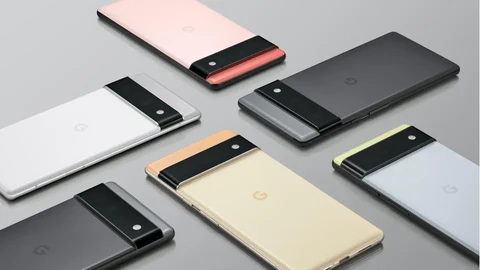
1. Refined Design and Premium Build
The Pixel design language has evolved over several generations, and the Pixel 8 Pro exemplifies a sophisticated blend of form and function:
- Sleek Aesthetics: The Pixel 8 Pro features a smooth glass back and polished aluminum rails, delivering a modern aesthetic. Google continues to refine the signature horizontal camera bar introduced in earlier Pixels, this time offering a more integrated look.
- Ergonomics: Despite housing advanced internals, the Pixel 8 Pro is carefully contoured for comfortable in-hand use. Subtle curves along the edges help maintain grip, while the balanced weight distribution prevents hand fatigue over extended usage.
- Durability and Water Resistance: Corning Gorilla Glass (often Victus 2 or equivalent) on both front and back improves scratch resistance. The device typically offers an IP68 rating, meaning it can withstand dust ingress and submersion in shallow water for a limited period, reassuring for accidental spills or rainy days.
This refined design language underscores Google’s commitment to offering a premium flagship experience. If aesthetics, build quality, and comfortable ergonomics rank high on your phone checklist, the Pixel 8 Pro delivers.
2. Stunning Display Technology
The Pixel 8 Pro touts one of the most advanced smartphone displays Google has ever produced. Key highlights include:
- Size and Resolution: With a 6.7-inch (approx.) OLED display, it provides ample real estate for browsing, videos, and multitasking. The display typically supports a high resolution (e.g., QHD+) that yields crisp text and detailed imagery.
- Adaptive Refresh Rate: The phone’s screen often supports refresh rates up to 120Hz, enabling ultra-smooth scrolling and animations. This dynamic refresh rate can scale down to conserve battery when viewing static content.
- Color Calibration and Brightness: Google invests heavily in accurate color rendering. The Pixel 8 Pro’s panel can achieve impressive peak brightness for better outdoor visibility, while the color tuning ensures that photos, videos, and UI elements look natural yet vibrant.
- Always-On Display: The Pixel 8 Pro continues Google’s tradition of providing ambient display features, showing time, notifications, or at-a-glance information with minimal power consumption.
Whether you’re reading ebooks, gaming, or streaming Netflix, the Pixel 8 Pro’s display stands out for its clarity, color fidelity, and fluidity. This screen is a delight for media consumption and everyday tasks alike.
3. Next-Generation Performance with Tensor G3
Google introduced its in-house Tensor SoC (system on a chip) line to tightly integrate AI-driven tasks and deliver specialized optimizations that standard processors might lack. The Pixel 8 Pro features the Tensor G3 chip, which underscores Google’s commitment to blending raw performance with on-device AI capabilities. Advantages include:
- AI and Machine Learning Acceleration: The Tensor G3 is designed to handle AI computations efficiently, powering features like real-time language translation, advanced speech recognition, and complex photo/video processing.
- Smooth Day-to-Day Performance: Whether you’re juggling multiple apps, streaming high-resolution content, or switching between tasks, the Tensor G3 ensures responsiveness and minimal slowdowns.
- Camera Enhancements: Google’s camera pipeline benefits from the Tensor’s specialized image processing units. This can accelerate tasks like HDR bracketing, computational photography, and real-time editing tools.
- Heat Management: Google typically refines chip design each generation to mitigate potential overheating issues. The Pixel 8 Pro’s chassis, combined with the Tensor G3, aims for a balanced approach to performance and thermal control.
So while raw benchmark numbers might not always eclipse the best from Qualcomm or Apple’s Bionic chips, the synergy between Google’s hardware and software often produces real-world experiences that are fluid, intelligent, and unique to the Pixel lineup.
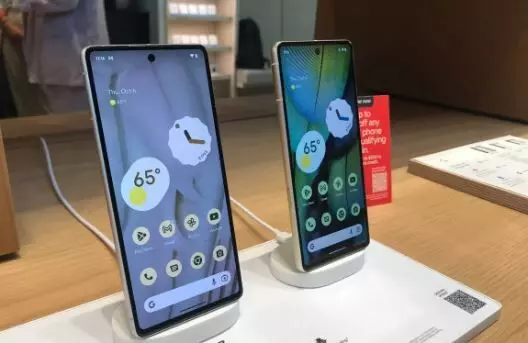
4. Class-Leading Camera System
One of the biggest reasons consumers choose Pixel phones is Google’s camera prowess. The Pixel 8 Pro pushes this tradition further with:
- Updated Sensor Array: The main camera typically uses a large, high-resolution sensor with a wide aperture, capturing ample light and detail. Accompanying ultrawide and telephoto lenses expand creative possibilities, whether capturing sweeping landscapes or zoomed-in portraits.
- Computational Photography: Google’s hallmark. The Pixel 8 Pro harnesses advanced algorithms to refine images. Features like Night Sight (for low-light shots), Portrait Mode with precise subject isolation, and Real Tone (accurate representation of diverse skin tones) ensure photos appear polished straight out of the camera.
- Video Improvements: Historically, Pixel phones lagged behind in video, but Google invests in improving stabilization, HDR video recording, and improved audio capture. The result is smoother, more vibrant video capturing.
- Pro-Level Controls: The Pixel 8 Pro may introduce advanced controls or manual shooting modes, bridging the gap between casual snap-and-go and more specialized photography usage.
- Photo Editing Tools: Google’s Magic Eraser, Photo Unblur, or advanced editing features powered by the Tensor G3 can help fix shots after capture, removing distractions or clarifying details.
If photography or videography is a focus, the Pixel 8 Pro’s blend of excellent hardware and Google’s signature computational photography pipeline is tough to beat.
5. Refined Software Experience: Stock Android + Exclusive Features
a) Pure Android UI
One of the Pixel line’s biggest appeals is its clean, stock Android experience. You won’t find heavy manufacturer skins or bloatware, just Google’s straightforward interface:
- Faster Updates: Pixel devices receive day-one OS updates for new Android versions and monthly security patches, ensuring an up-to-date experience.
- Longer Support: Google typically commits to multi-year support for Pixel devices, meaning you benefit from the latest OS features and security improvements longer than many competitors.
- Exclusive Pixel Tweaks: Handy features like At a Glance widgets, contextual phone call screening with Google Assistant, and more tailored Pixel-only enhancements.
b) AI-Driven Enhancements
With the Tensor G3 at its core, the Pixel 8 Pro introduces or refines many AI features:
- Adaptive Battery and Performance: The phone learns usage patterns to optimize power usage.
- Enhanced Voice Typing: Google’s speech recognition for texting or dictating is more accurate and can handle punctuation effectively.
- Live Translate: Real-time text or voice translation across multiple languages.
- Personal Safety: Automatic crash detection or emergency sharing features, leveraging AI to protect users.
This synergy of hardware and software fosters a phone that’s not just powerful, but also context-aware, simplifying daily tasks in subtle, meaningful ways.
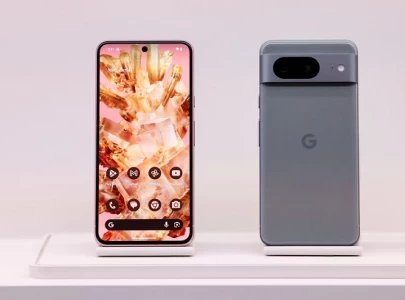
6. Battery Life and Charging Capabilities
a) Battery Capacity
While exact battery specs vary, the Pixel 8 Pro typically offers a capacity around 4500–5000 mAh. Coupled with the power efficiency of the Tensor G3 and intelligent battery management, the phone can comfortably last a full day under moderate usage. Power-heavy tasks like gaming or 4K video recording will impact longevity, but for typical daily usage, it should hold up well.
b) Fast Charging and Wireless Options
Google often includes fast wired charging (e.g., 30W or slightly higher), though not always matching the super high wattage seen in certain Chinese brands. The Pixel 8 Pro usually supports a decent quick charge solution, giving you meaningful top-ups in short bursts.
Wireless charging with Pixel Stand or Qi pads remains standard in Google’s flagship, sometimes offering reverse wireless charging for accessories like Pixel Buds. This convenience ensures you can casually place the phone on a charging pad at your desk or nightstand.
7. Durability and User Considerations
a) Water and Dust Resistance
The Pixel 8 Pro’s IP68 rating means it can handle dust ingress and withstand submersion in shallow water for up to 30 minutes. Rain splashes or accidental submersion in a sink shouldn’t be catastrophic, though it’s not designed for extended underwater photography.
b) Biometric Security
Modern Pixel phones typically feature an under-display fingerprint scanner, plus an improved Face Unlock system (though not as advanced as dedicated 3D facial scanning). The improved fingerprint scanner is more accurate and faster than earlier Pixel devices, offering convenience for secure unlock.
c) Audio and Speakers
Though the headphone jack is absent, Pixel phones usually deliver decent stereo speaker performance, with top and bottom speaker outputs. Paired with improved microphones, call quality and speaker audio for media or speakerphone are robust.
8. Ecosystem Integration
If you already use other Google devices—like Chromecast, Nest speakers, or Google Home products—the Pixel 8 Pro ties seamlessly into that ecosystem. The phone doubles as a central hub for controlling smart home devices, with direct integration in apps like Google Home. Meanwhile, features like Nearby Share let you quickly transfer files to other Android or ChromeOS devices.
Using Google services like Gmail, Photos, and Docs can be more convenient on a Pixel, with background sync optimizations or exclusive features like unlimited Photo uploads in some older Pixel generations (though newer models might not offer unlimited at full resolution). Regardless, the synergy between phone, home devices, and online services remains a key Pixel selling point.
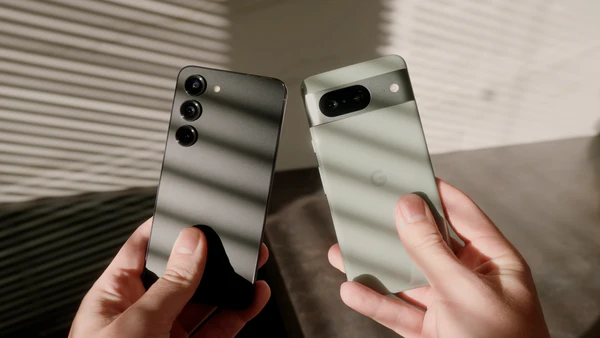
9. Privacy and Security
Google invests significantly in Pixel phone security, including:
- Titan M2 Security Chip: Protects sensitive data like biometric info, secure transactions, and system integrity.
- Regular Patches: Monthly security updates patch vulnerabilities quickly, reducing exposure to potential exploits.
- Anti-malware: Play Protect scanning and system-level AI detection help keep malicious apps at bay.
Moreover, AI features run largely on-device, meaning personal data like voice transcriptions or face detection doesn’t necessarily leave the phone. This localized approach can enhance privacy and speed.
10. Potential Drawbacks or Trade-Offs
While the Pixel 8 Pro has impressive strengths, consider a few trade-offs:
- Less Aggressive Charging Speeds: Some competing phones boast 65W, 80W, or even 120W charging. Google’s approach is more conservative.
- No Expandable Storage: If you need large local media storage, the phone’s internal capacity is your only option. Cloud-based solutions (Google Photos, Drive) partially mitigate this but require data or Wi-Fi.
- Limited Model Variety: Google’s phone lineup is smaller than Samsung’s or Apple’s, so you have fewer screen size or memory variants.
- Price: The Pro variant is squarely in flagship territory, so it’s not a budget device. That said, the combination of advanced camera, custom SoC, and stock Android may still offer strong overall value.
Be sure to weigh these considerations. If super-fast charging or microSD support is crucial to you, a different brand might be more fitting. However, for those wanting a polished software experience and Google’s imaging software, these trade-offs might be less important.
11. Ideal User Profiles
Who might the Pixel 8 Pro be best for?
- Photography Enthusiasts: The camera system, combined with Google’s unmatched computational photography, excels in everyday captures, low-light scenarios, and creative portrait shots.
- Software Purists: If you love the pure Android interface, timely updates, and minimal bloatware, the Pixel’s OS is unmatched.
- AI and Google Ecosystem Fans: For those heavily invested in Google services, the synergy and exclusive AI features can be a big draw.
- Long-Term Reliability: Google’s device support, monthly security patches, and multi-year OS upgrades reassure buyers seeking longevity.
- Everyday Users Seeking Simplicity: The Pixel’s user-friendly interface, powerful camera that “just works,” and robust battery management make it a stress-free daily driver.
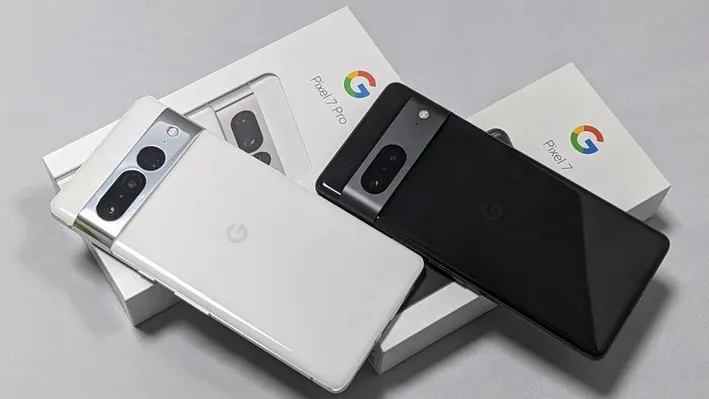
12. Tips for Getting the Most Out of the Pixel 8 Pro
- Set Up Backups: Leverage Google Photos for easy photo backup, or local backups for maximum resolution.
- Explore Camera Tools: Experiment with Astro mode (if available), Night Sight, or advanced manual controls. Try different portrait lighting effects or the Magic Eraser feature.
- Customize Quick Settings: If you want shortcuts to battery saver, screen recording, or other toggles.
- Check for Accessory Deals: Official accessories like Pixel Buds, protective cases, or the Pixel Stand wireless charger can enhance the ecosystem synergy.
- Stay Updated: Accept monthly security patches and major OS updates to maintain top performance and new Pixel-exclusive features.
13. Pricing and Availability
The Pixel 8 Pro likely sits in the upper flagship range, potentially matching or slightly undercutting top iPhone and Galaxy S series prices. Google often provides trade-in offers or includes freebies (like store credit or Pixel Buds) for early adopters. Check official Google Store deals, or carriers for contract or installment pricing. If you’re not married to being an early adopter, waiting for holiday promotions can also yield savings.
14. Future-Proofing
Google has historically guaranteed at least 3 years of major Android updates (and 5 years of security patches) for Pixel devices, although they’re rumored or pushing for extended support with newer releases. The Pixel 8 Pro’s advanced Tensor G3 chip can handle increasingly sophisticated AI tasks, ensuring the phone remains relevant as machine-learning-based features expand. This emphasis on software-based improvements means you might see notable new camera or system enhancements over the phone’s lifecycle—even after a year or two of ownership.
15. Final Verdict
Why Choose the Google Pixel 8 Pro? At its core, the Pixel 8 Pro represents the culmination of Google’s hardware-software integration, offering:
- A robust camera system that harnesses Google’s computational photography expertise for stunning stills and dynamic videos.
- The refined Tensor G3 chip that fuels advanced AI functionalities, enabling features like real-time translation, advanced voice typing, and intelligent photo editing.
- A polished stock Android interface with timely updates, ensuring security and new features remain fresh and integrated seamlessly.
- A premium display, sophisticated build, and all-day battery that slot it comfortably among flagship peers.
- The intangible “Pixel experience”—where software additions, assistant capabilities, and Google integration come together in a cohesive, user-friendly package.
Of course, no phone is one-size-fits-all. But for those who value top-tier imaging, lean software with guaranteed updates, and deep Google ecosystem integration, the Pixel 8 Pro is an excellent contender. It manages to bring you the best of AI-driven mobile tech in a device that feels both powerful and approachable. If that resonates with you, the Pixel 8 Pro might just be your next smartphone.
